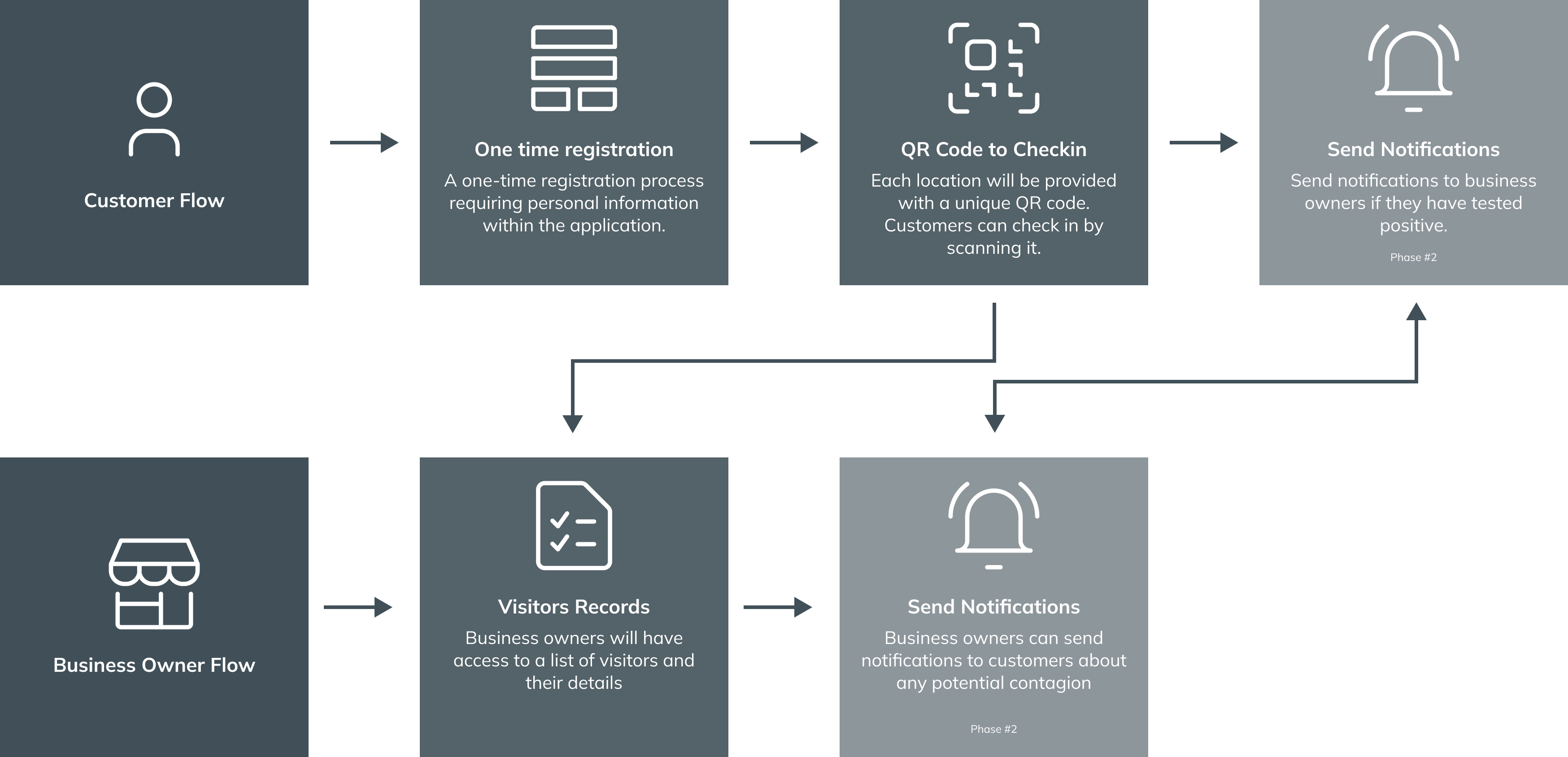Pandemic-Era Visitor Tracking: Records with Contactless Innovation.
![Phone-screens-[remix]](https://reshikafernando.com/wp-content/uploads/2024/04/Phone-screens-remix.gif)
Overview
With the onset of the 2020 pandemic, both businesses and individuals found it necessary to track their visits and be notified if they had come into contact with an infected person.
Initially, business owners resorted to maintaining a record book where individuals had to sign their name and provide contact details upon entry. However, over time, people lost interest in this method, making it increasingly challenging for owners to contact visitors individually.
My Contribution
In this project, I was able to contribute from both a designer’s perspective and as a stakeholder, as I was one of the founding members of the application. Therefore, I was able to bring some marketing expertise to the product design process as well.
Brainstorming
- During this phase, we have analyzed the problem we were trying to resolve.
- Identifying possible pain points in the current process of tracking visitors.
- Understanding the unique value proposition of the provided solution.
Mentoring
-
Oversaw and guided junior designers through a smooth design process.
-
Contributed to conducting user interviews and empathy mapping.
Front-end Implementation
- Front-end implementation using Ionic framework.
- UI testing to assure device friendliness.
Empathy Mapping
In the research phase, I interviewed 10 users aged between 19 and 50: three of them were shop owners, and 7 were visitors, in order to better understand user challenges and motivations.
Below are the challenges they encountered when visiting a place.
Hygiene
Everyone coming to the location touches the same record book, and it’s a hassle to sanitize the pen each time.
Sometimes sanitizer is spilled all over the record book, and the records get smudged.
Privacy
Customers were not comfortable with their personal details being accessible or visible to everyone coming to the property, especially information such as phone numbers or IDs, which could be used for scams.
Incorrect Details
Sometimes customers leave fake details due to privacy issues, making it very difficult to communicate with them during infection situations. This also leads to a lot of time wasted in manual communication.
Time
It takes time to manually enter details, and when there is a group of people, it takes a considerable amount of time, which creates a blockage at the entrance and unnecessary gathering.
Userflow
First phase: The initial phase of the application was to digitize the visitor list, thus avoiding further contamination of COVID-19 through manual registration.
Second phase: Creating the capability to notify business owners of infections within the application. This involves providing business owners with a portable device enabling them to send notifications to infected visitors through the backend.

![Showreel-Grid-Mobile-003-[remix]](https://reshikafernando.com/wp-content/uploads/2024/04/Showreel-Grid-Mobile-003-remix.gif)
Outcome / Results
We encountered some problems while marketing the application to potential buyers.
#Problem 1: A manual requirement will still be needed, as not everyone accessing the locations can check in through a smartphone or owns one.
#Problem 2: There was still a need for someone at the entrance to verify that users checked-in.
#Problem 3: Local authorities haven’t approved the application, as a government application was released on the same dates.